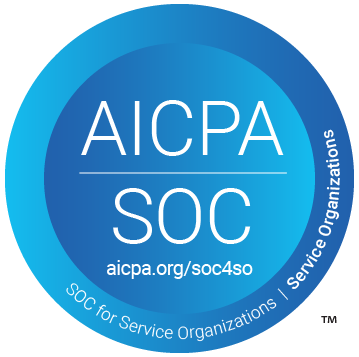Performance Management Data as the Engine for Internal Mobility
How leading organizations are transforming performance data into real-time insights that power internal mobility, close skill gaps, and build business readiness.
Deloitte’s 2025 Human Capital Trends frames the shift leaders need to make: stop treating performance as compliance and start using it to enable people to do their best work.
Deloitte’s deeper cut on performance practices reinforces the urgency: only 26% of organizations say their managers are very effective at supporting performance, a clear signal that legacy systems are underdelivering. Source: Deloitte United Kingdom.
Gartner’s 2025 outlook places strategic workforce planning and HR technology at the top of HR’s agenda—precisely where performance data should feed readiness and mobility decisions.
And when AI is embedded into modern performance systems, outcomes improve. Betterworks’ 2025 report finds 89% satisfaction among managers and employees when AI supports continuous performance enablement rather than rear-view evaluation.
Why Change Now: The Cost of Blind Mobility Decisions
A critical problem persists: most role movements still happen from the outside. McKinsey’s 2025 analysis shows over 80% of role moves are external—a telltale sign that many organizations fail to recognize internal readiness.
Pressure is building to fix that gap. Harvard Business Publishing’s 2025 leadership development research shows 53% of large enterprises list adopting or expanding AI-based talent management/internal mobility systems as their number-one human-capital project this year.
When organizations rely on annual ratings or static assessments, leaders make mobility and hiring decisions in the dark. They miss internal candidates, overspend on external hiring, and leave skill gaps unaddressed.
NHMB’s Example: From Visibility to Mobility
At NHMB, managers now use real-time performance visibility to align team skills to strategic priorities, pinpoint successors, flag critical gaps for development or hiring, and enable mobility across affiliates. That turns performance data from retrospective scorekeeping into forward-looking intelligence.
The pattern extends beyond one company. Independent coverage of the LinkedIn Workplace Learning Report 2025 highlights how organizations that invest in career development and mobility outperform peers on retention and business metrics. Veris Insights notes these organizations don’t just “rate”—they read readiness.
Readiness = Skills Visibility
Readiness means seeing not only what someone has done, but what they can do next. The Coursera Global Skills Report 2025 tracks how agile organizations continuously refresh skill data to match shifting demand—exactly what modern performance systems must enable.
The World Economic Forum’s Future of Jobs Report 2025 underscores the mix of human and technical skills rising in importance, from analytical thinking to resilience and leadership—capabilities that performance systems should surface alongside output metrics.
Leadership Risks & the Coming AI Regulation
Leaders who ignore performance as a readiness tool face two risks.
- Strategic blind spots. You default to external hiring and overlook ready internal talent.
- Regulatory exposure. As AI embeds in HR, performance tools fall under risk-based regulation.
The European Commission has confirmed the AI Act’s timeline: obligations for general-purpose AI models begin in August 2025, with high-risk HR systems following in August 2026.
The European Parliament Research Service outlines the phased implementation—full enforcement expected by 2027. Translation for HR: build performance systems that inform mobility and also meet expectations for fairness, traceability, and bias control.
What Leaders Must Do to Put Readiness to Work
- Reassess your performance architecture. Bring together real-time feedback, skills development tracking, and forward-looking readiness signals.
- Measure mobility, not just performance. Track internal promotion rates by role family and the percentage of openings filled from within.
- Surface hidden talent. Use skill-alignment algorithms to match high-potential employees to roles they might not self-nominate for.
- Embed guardrails. Ensure transparency, audit logs, and bias checks—especially where AI is involved.
- Build HR and manager fluency. Make sure leaders can read readiness signals and act on them.
SHRM’s 2025 research shows that organizations are shifting investment from external hiring toward equipping the existing workforce, with internal mobility and development highlighted as essential strategies.
Veris Insights frames internal mobility as a cost-effective answer in a tighter labor market—if supported by visibility, structure, and manager alignment.
Final Thought
Performance data must be more than a scorecard. It should function like the nervous system of the organization, continuously sensing who is ready for what.
- Deloitte’s 2025 findings warn that legacy proxies produce weak performance support.
- McKinsey shows external moves still dominate when internal readiness is invisible.
- NHMB’s outcome proves the shift is both feasible and valuable.
- The AI Act sets a clear regulatory horizon for HR technologies used in evaluation and progression.
- SHRM and Veris Insights confirm the move toward structured internal mobility.
See a preview of TalentGuard’s platform
Why Your 2026 Plan Lives or Dies on Performance Management
Performance management has long been viewed as a tedious task — a set of forms to be filled out, filed, and revisited at year-end. For leaders trying to do more with less, that process won’t carry organizations through 2026. The companies that succeed will be those that treat performance management as the foundation for succession […]
The Broken State of Performance Reviews
The Cost of Stagnant Performance Reviews Performance reviews aren’t just outdated. They’re quietly undermining business performance. According to Gallup, only 14% of employees strongly agree their reviews inspire improvement. The consequences ripple across the organization when nearly nine out of ten employees disengage from a core HR process. Retention suffers. Leadership pipelines weaken. Workforce agility […]
How AI Helps Human Resources (HR) Make Smarter Talent Decisions
The AI Advantage in HR: Human Resources has always been a data-driven function, but traditional methods of managing smarter talent decisions often fall short in today’s fast-paced business landscape. Spreadsheets, manual performance reviews, and static competency models cannot keep up with the rapid evolution of workforce demands. This is where Artificial Intelligence (AI) steps in.



